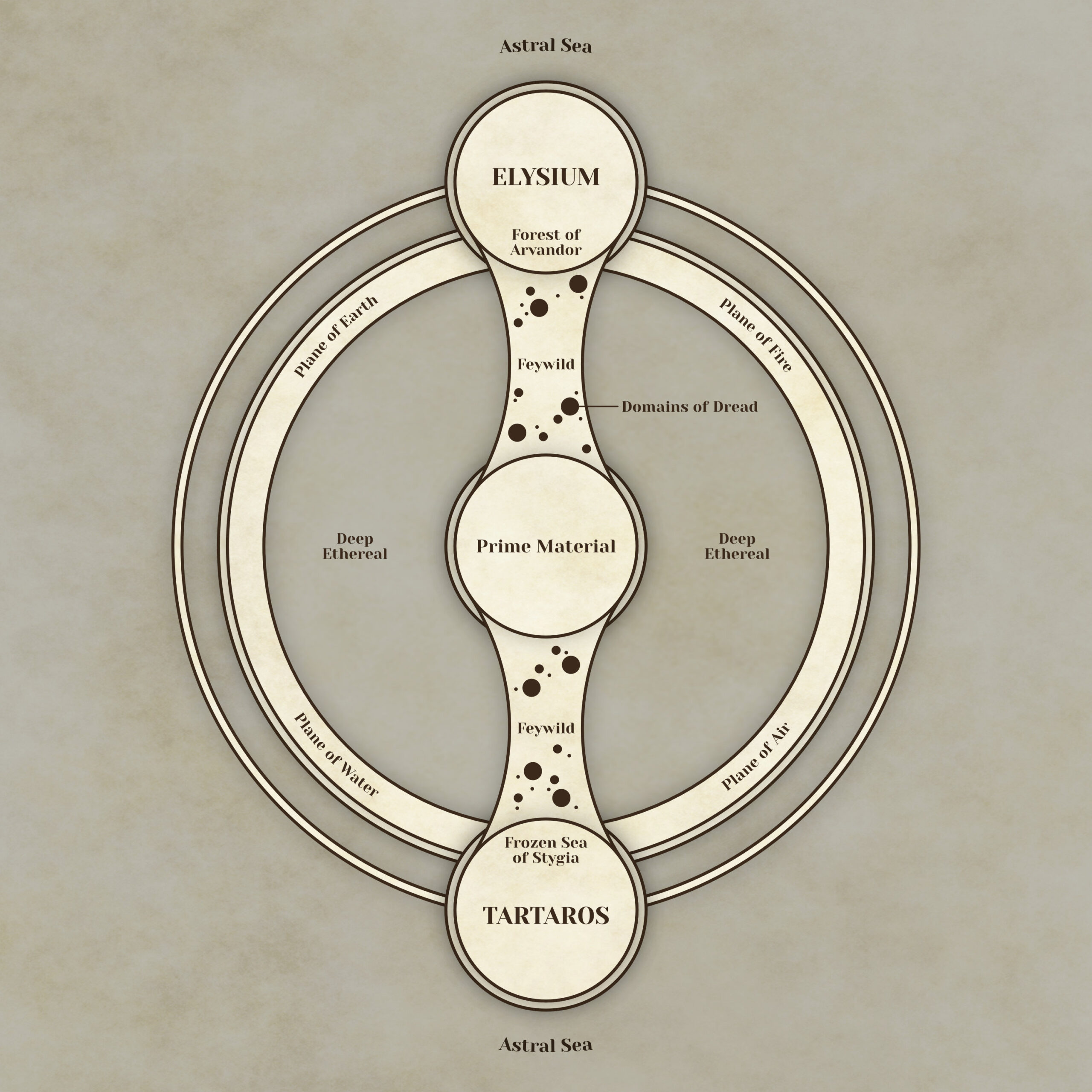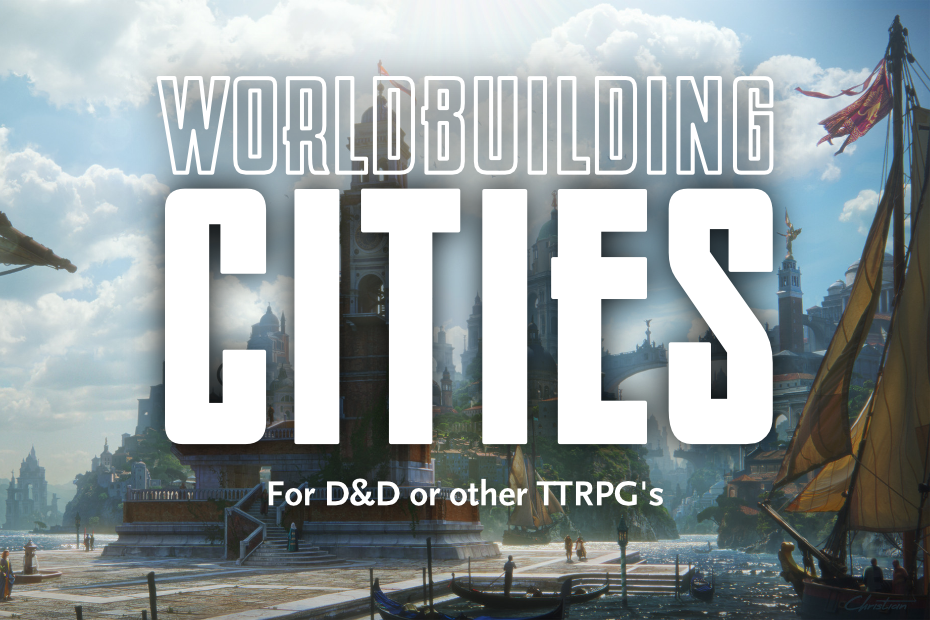Art: Symbiotic Fantasy City by Christian Dimitrov
Let’s take a look at the fantasy world you are most likely a fan of, Lord of the Rings. Just like real life around the Mediterranean in the Bronze Age, cities were the most important things in the world. Not countries, not regions, not continents, but cities. A person that lived in one of those cities like for example Carthage, felt immensely more like a Carthaginian than a Tunisian. This had a few reasons that I would like to explain by using J.R.R. Tolkien’s world as a reference.
The countries of Gondor and Rohan, with their capitals of Minas Tirith and Edoras respectively, are most of the time considered kingdoms. Even so, these cities that also function as the capital are also the only cities in their countries. Although Helmsdeep, Minas Ithil (which became Minas Morgol), and Osgiliath do exist as places where people seemed to live in or around, two of these are considered fortresses instead of cities, places where standing armies reside. These could of course spawn a variety of ordinary folk to focus on the production of food and other necessary resources, but we never hear of places like this that grow to become more than a village or town. Osgiliath is another tale on itself, it was the former capital of Gondor until within the aftermath of a great plague. The king decided to move to Minas Tirith, abandoning Osgiliath as a viable place to live, using it primarily for its strategic position for his forces, and focusing the entirety of Gondor on this new city.
Why am I telling you al this? Well, like me, you might also find it a daunting task to come up with an entire world for your D&D players to play in. So my advice for you today is thus:
Don’t think you have to make entire countries for your world to feel realistic or whatever. Make one city for every civilization you want, no more, no less.
There are of course some things you still have to think about, but let’s go through them at an easier pace, now that I’ve lifted almost two tons of your shoulders.
Take a deep breath, here, we, go!
Water
Humans and almost every other humanoid in Dungeons and Dragons needs a daily supply of water akin to 8 pints (or 2 full waterskins). So the first thing you need close to your city is water. And when I say close, I mean preferably slap it in the freaking middle of that baby. Rivers, lakes, underwater lakes, oases, snow to melt into water, and freshwater seas are perfect examples of this (I don’t know why your seas are made up of fresh water, you freak, but if they are, people can drink that stuff).
Travel & Trade
There is one thing everyone wants: what they don’t have. So trade is something that automatically starts to happen between cities. Either physical objects that cannot be found in the vicinity of their own cities, or stuff that is difficult or even impossible to make by their own crafters.
Rome for example had a monopoly on glass for a long time, although glass is just melted sand. We can assume that maybe a glass guild held the secret of making glass, which it passed down to its pupils. Other cities rather traded with Rome than to discover for themselves how glass was made, for that could become a long and arduous process. And if Rome would catch wind of people trying to discover the secret of glass, that could cause war or worse.
So discover what resource or wisdom is found within or close to your city, this is now a prominent item which it trades with neighboring cities.
Race
A city build by elves probably would look a lot different in your world than a city build by either dwarves or humans. As it is your world I have no idea what lives in it, and in what capacity, but let me give you some examples of what could be different based on the racial features of some of the most basic races in Dungeons and Dragons.
- Dwarves. Being smaller and slower than humans, I envision a city with cramped alleyways and less of a focus on safety around poisonous or biochemical items, because dwarves are resistant to poison damage and have a higher than normal Constitution score. Most if not everything is probably made of stone if it is not entirely hewn out inside a mountain already.
- Elves. If your adult life was as long as that of the elves, and on top of that you only had to sleep for half as long as you have to do now, you could be insanely productive, or party even more than you do now, whatever you choose, I don’t judge. But I see elven cities as the epitome of the word ‘bustling’. Everyone is always doing everything to the fullest of their attention, whether this results in feasts that last for weeks, or districts that never really close their shops. Eight hour work days are much easier to sit through if that means that leaves you with half a day of free time, not counting sleeping hours.
- Gnomes. I’m sorry if someone in your family is a gnome, but gnomes are insane. Half of them can build tiny miracles in a matter of minutes, whereas others can have real conversations with animals. These cities are not run by gnomes, they are ruled by them. The work is either done by autognomes and other freaky robotic servants, or by a swarm of squirrels that delivers your mail or whatever. These towns are definitely the weirdest for humans.
- Halflings. I am not saying that a city built by halflings would not have any building restrictions however dangerous for its citizens, but look at the halfling. They are hard to frighten and frighteningly lucky. Their city could be build near a volcano or in the deepest swarm, and none of them would care.
Extraterrestrial Locations
The Feywild, the Shadowfell, the seven heavens and the seven hells, the elemental planes of fire, air, water, and earth and Mechanus and Limbo are broadly speaking the 22 places players can go to beside what’s available on their home world. There is one problem with these locations however, most of them are infinite, meaning it would be technically impossible to chart them for your players. A single city however, for each of these locations that exist in your world, well, that is a lot easier.
In the world my players play in I simplified it even more. There is one heaven and one hell, no Mechanus, no Limbo, no Shadowfell. Heaven is called Elysium and has aspects of all heavens in it, in the center of it is city on a mountain where the gods live just like Celestia, Arborea, and Ysgard in standard D&D. The borderlands of Elysium are called the forest of Arvandor, and it connects Elysium to the Feywild, the Plane of Fire, and the Plane of Earth.

Each of these places has their own city where cognitive races reside.
- Elemental Planes. Genies, Chwinga, Genasi, Mephits, and specific creatures such as Gargoyles, Firenewts, or Invisible Stalkers have made their home here. Dragons and Giants are also commonplace in the Elemental Planes, but they don’t really, you know, fit in. Because they are so big.
- Elysium. Angels, Aasimars, Hollyphants, Ki-rins, and Pegasi inhabit the plains around and the lower levels of this city. The gods themselves of course are mainly living at the top.
- Tartaros. Demons live outside the city, whereas devils run the show inside. Yugoloths and Tieflings can also be found throughout the city, but that’s about it. Just one big place where everyone is only out for themselves. Kinda like San Francisco but with more brimstone.
- Feywild. The feywild is home to a plethora of weird and interesting creatures. It has two cities, instead of one, but this being the feywild, these cities sometimes meld into each other at various places. Taking a wrong turn can result in you suddenly finding yourself in the other city. One city is run by the summer-focused Seelie court, whereas the other is home to the winter-themed Unseelie court. Dark reflections of these cities or other places within either the feywild or the material plane are sometimes found behind a opaque wall of mist, these places are called Domains of Dread and function outside of the jurisdiction of both the Seelie and Unseelie courts.
Hopefully this has given you some inspiration and some do’s and dont’s when you make your next D&D world. Hasta la Vista!
